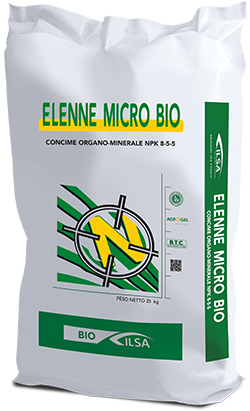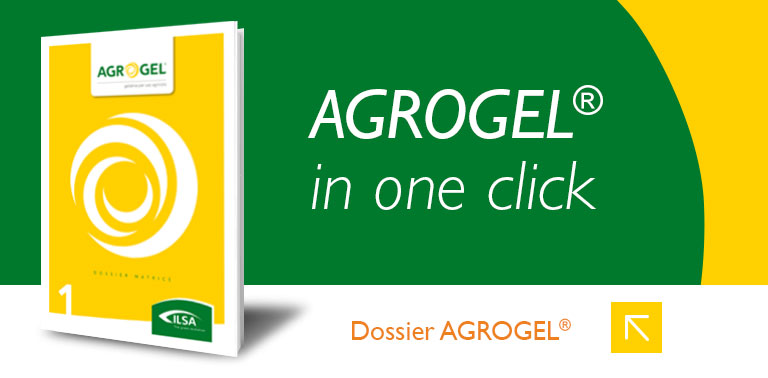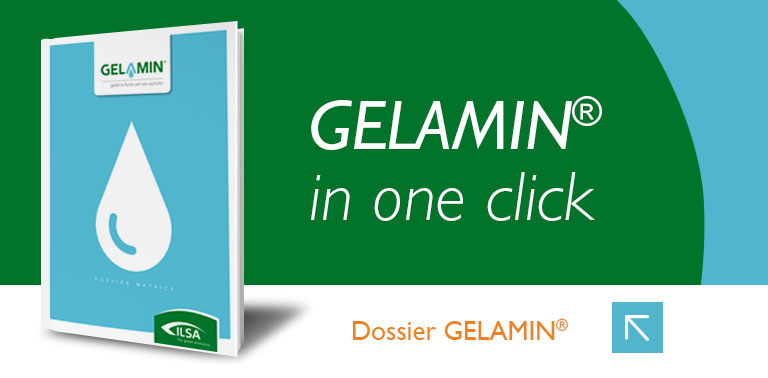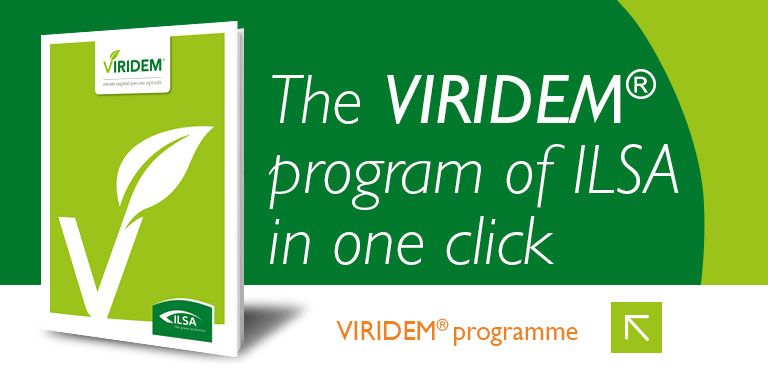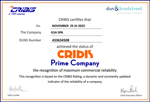NPK 8.5.5
CONTAINS AGROGEL®
What is it?
ELENNE MICRO BIO is a pellet organomineral fertilizer allowed in organic farming, based on Agrogel®, designed for tree and horticultural crops with high nitrogen demand but providing, in a balanced manner, also the main macro- and meso-elements needed by plants. The complexation between organic matter, phosphorus, sulfate potassium, calcium and magnesium allows for the progressive availability of all elements, so as to support crops according to their nutritional needs and improve soil fertility. The presence of the organic component in ELENNE MICRO BIO allows a synergistic nutritional effect with the nutrient elements increasing the effectiveness of the product.
How to use?
ELENNE MICRO BIO has a nutrient ratio that is particularly suitable for olive and specific fruit crops, such as Stone Fruits, Kiwi, and Small Fruits. It is also suitable for applications at vegetative restart or during the crop cycle of Pome fruits, Citrus fruits, and Fruit vegetables such as Solanaceae, Cucurbitaceae, and Strawberry.
Which benefits does it bring?
- Efficient nutrition based on macro- and mesoelements;
- enhances fruit development;
- ideal for applications at the beginning or during the cycle;
- zero loss of nitrogen and other nutrients.
COMPOSITION
-
Total Nitrogen (N) 8 %
- Of which: Organic Nitrogen (N) 8 %
- Total Phosphorus Pentoxide (P2O5) 5 %
- Water soluble Potassium oxide (K2O) 5 %
- Total Calcium Oxide (CaO) 11 %
- Magnesium Oxide (MgO) 2 %
- Water soluble Sulfur trioxide (SO3) 6 %
- Organic Carbon (C) 27 %
Doses and methods of use of the fertilizer
-
Citrus
-
All600-1000 kg/haFrom early vegetative development and/or after fruit setting
Covering or underground
-
-
Fruit
-
Blackberry600-800 kg/haFrom early vegetative development and/or after fruit setting
Covering or underground
-
Blackcurrant600-800 kg/haFrom early vegetative development and/or after fruit setting
Covering or underground
-
Blueberry600-800 kg/haFrom early vegetative development and/or after fruit setting
Covering or underground
-
Hazelnut600-800 kg/haFrom early vegetative development and/or after fruit setting
Covering or underground
-
Kiwi600-1000 kg/haFrom early vegetative development and/or after fruit setting
Covering or underground
-
Pistachio600-800 kg/haFrom early vegetative development and/or after fruit setting
Covering or underground
-
Raspberry600-800 kg/haFrom early vegetative development and/or after fruit setting
Covering or underground
-
Redcurrant600-800 kg/haFrom early vegetative development and/or after fruit setting
Covering or underground
-
Walnut600-800 kg/haFrom early vegetative development and/or after fruit setting
Covering or underground
-
-
GrapeVine
-
All600-900 kg/haFrom early vegetative development and/or after fruit setting
Covering or underground
-
-
Legumes and potatoes
-
Potato600-800 kg/haPre-sowing/transplanting or after fruit setting
Covering or underground
-
-
Olive Tree
-
All600-800 kg/haFrom early vegetative development and/or after fruit setting
Covering or underground
-
-
Pome fruits
-
All600-1000 kg/haFrom early vegetative development and/or after fruit setting
Covering or underground
-
-
Stone fruits
-
Apricot600-800 kg/haFrom early vegetative development and/or after fruit setting
Covering or underground
-
Cherry600-800 kg/haFrom early vegetative development and/or after fruit setting
Covering or underground
-
Peach600-800 kg/haFrom early vegetative development and/or after fruit setting
Covering or underground
-
Plum600-800 kg/haFrom early vegetative development and/or after fruit setting
Covering or underground
-
-
Tropical Crops
-
All500-700 kg/haFrom early vegetative development and/or after fruit setting
Covering or underground
-
-
Vegetables
-
Courgette700-900 kg/haPre-sowing/transplanting or after fruit setting
Covering or underground
-
Cucumber / Gherkin700-900 kg/haPre-sowing/transplanting or after fruit setting
Covering or underground
-
Eggplant600-800 kg/haPre-sowing/transplanting or after fruit setting
Covering or underground
-
Melon700-900 kg/haPre-sowing/transplanting or after fruit setting
Covering or underground
-
Pepper600-800 kg/haPre-sowing/transplanting or after fruit setting
Covering or underground
-
Strawberry700-900 kg/haPre-sowing/transplanting or after fruit setting
Covering or underground
-
Tomato600-800 kg/haPre-sowing/transplanting or after fruit setting
Covering or underground
-
Watermelon700-900 kg/haPre-sowing/transplanting or after fruit setting
Covering or underground
-
Dosages are purely indicative and may vary depending on pedoclimatic conditions and average yields expected.
